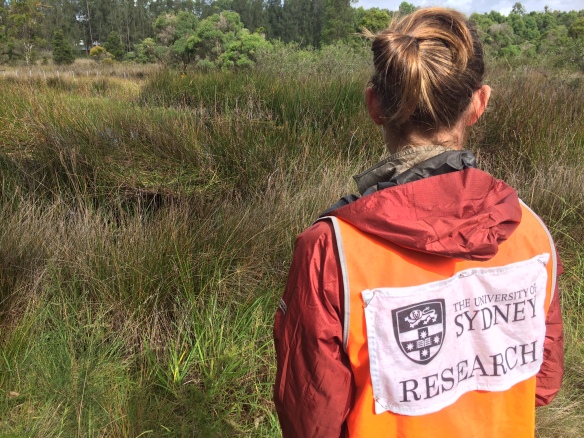
We need to do all we can to protect our urban wildlife but what if the ways we do that increases mosquito risk? PhD candidate Jayne Hanford will be presenting the results of her research at the Ecological Society of Australia conference in Tasmania.
Mosquitoes can share their aquatic habitats with many other animals.
The 2019 Ecological Society of Australia conference will be held in Tasmania, 24-29 November. The conference theme, “Ecology: science for practical solutions”, is closely aligned with much of the work my collaborators and myself undertake each summer. We’re trying to ensure that recommendations on managing the pest and public health risks associated with mosquitoes is informed by the best available science.
Practical solutions to the challenges of balancing mosquito management while also ensuring positive outcomes from the environment too.
Jayne Hanford will be presenting her research in the “Field-based manipulative experiments for under-standing environmental change” symposium. She has been studying the aquatic biodiversity of urban wetlands as part of her PhD. This recent project aimed to determine what impacts management of urban wetlands to enhance conditions for local frog populations may have on local mosquito populations.
The research was undertaken at Sydney Olympic Park where an extensive network of freshwater ponds make up Narawang Wetlands. These wetlands are home to the endangered Green and Golden Bell Frog (Litoria aurea) but they’re also home to the plague minnow (Gambusia holbrooki). The plague minnow is essentially the cane toad of Australia’s waterways, introduced around 100 years ago to control mosquito populations, this aggressive predatory fish has impacted much of our local aquatic life, especially frogs. Populations of this fish need to be managed to enhance conditions for local frogs and, especially, their tadpoles.
Jayne has already found that mosquitoes avoid water bodies where the fish are found. The next step was to see how the seasonal draining of the local wetlands impacted the abundance and diversity of mosquito populations.
Immature mosquitoes and other aquatic macroinvertebrates were sampled from drained and undrained ponds within the wetland network. Once the drained ponds had been at least partially reflooded, mosquitoes were more likely to be found. This wasn’t too surprising given the results of previous experiments. Mosquitoes like to avoid habitats with fish but also, if they do lay eggs in those habitats, mosquito larvae aren’t likely to last long!
The results are useful for those authorities looking to manage waterbodies for wildlife conservation. Removal of the plague minnow may result in more suitable conditions being created for mosquitoes. It may be good for the frogs but we also know that their tadpoles aren’t eating the mosquito larvae. Strategies may be required to manage the pest and public health risks associated with local mosquitoes in these habitats.
You can catch Jayne’s work in the poster session but also as part of the symposium at 3pm on Monday 25 November in Chancellor 5!
The full abstract for Jayne’s presentation is below:
Unintended impacts of managing urban wetlands for conservation
Jayne K. Hanford1,2*, Cameron E. Webb2,3 , Dieter F. Hochuli1
1 School of Life and Environmental Sciences, The University of Sydney, Australia; 2 Marie Bashir Institute for Infectious Diseases and Biosecurity, The University of Sydney, Australia; 3 Medical Entomology, NSW Health Pathology, Westmead Hospital, Westmead, Australia.
Urban wetlands are increasingly being recognised as valuable conservation resources that support significant biodiversity. Concerns around the pest and public health risks of mosquitoes will restrict how we manage these wetlands, as outbreaks of mosquito-borne diseases fuel public fear and foster dislike of mosquitoes. Understanding the ecological and public health consequences of wetland management practices is vital to maximise the conservation value of urban wetlands without negatively impacting public health. Our aim was to determine how wetland management to benefit a threatened species affects mosquitoes and aquatic biodiversity. A group of six urban wetlands in Sydney, Australia, were drained to reduce the abundance of an invasive fish, Gambusia holbrooki, and then refilled to provide breeding habitat for a threatened frog, Litoria aurea. We collected and compared aquatic macroinvertebrates, mosquito larvae, and mosquito adults from these refilled wetlands, and six adjacent undrained wetlands, on four occasions across summer and autumn. Wetland draining had a significant effect on aquatic macroinvertebrates and larval mosquitoes, although differences between drained and undrained wetlands decreased over time. Draining did not affect adult mosquito assemblages associated with the wetlands. The number of constructed and rehabilitated wetlands in urban areas continues to grow, and while conserving threatened habitats and species is imperative, our results highlight how wetland management can impact non-target species with potentially negative effects on humans. It is vital that future design and management of urban wetlands around the world also considers the impact on vectors of human disease.
If you’re at the conference, why not join the conversation on Twitter using the official conference hashtag #ESAus19 or reaching out to Jayne or myself!